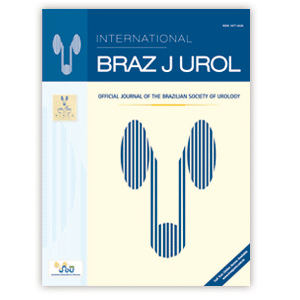UROLOGICAL SURVEY
Pediatric Urology
Pelvic reduction during pyeloplasty for antenatal hydronephrosis: does it affect outcome in ultrasound and nuclear scan postoperatively?
Burgu B, Suer E, Aydogdu O, Soygur T
Division of Pediatric Urology, Department of Urology, Ankara University School of Medicine, Ankara, Turkey
Urology. 2010; 76: 169-74
OBJECTIVE: To compare ultrasound (US) scan and nuclear renography findings in patients who underwent pyeloplasty with and without pelvic reduction in a randomized prospective study.
METHODS: A total of 42 patients, all prenatally diagnosed with unilateral hydronephrosis, were included. Hydronephrosis was confirmed postnatally. Twenty patients were randomly selected to undergo pyeloplasty with pelvic reduction and 22 underwent pelvis-sparing pyeloplasty. Patients were evaluated with mercaptoacetyltriglycine-3 scans on the sixth month and US scans on the first, third, and sixth months, postoperatively. Mean follow-up was 37 +/- 5.6 weeks. Statistical analyses were performed using chi-square test and significance was set as P <.05. Power analyses were performed by the NCSS-PASS program. Power value of 0.84 was calculated for a sample size of 42.
RESULTS: The anteroposterior pelvic diameter decreased significantly in the pelvic reduction group compared with pelvis-sparing group in the first- and third-month US scans. However, the difference was not significant in the sixth month. The improvements in the US findings for the pelvis-sparing group match with those of the pelvic reduction group later in the postoperative period. Pelvic reduction significantly improved the renal washout time (T(1/2)) in mercaptoacetyltriglycine-3 renography when compared with pyeloplasty group without reduction at postoperative sixth month. Differential renal function was found to be unaffected from pelvic reduction.
CONCLUSIONS: Resolution of anteroposterior diameter in US scan is more prominent in the pelvic reduction group at earlier stages of the postoperative period. Although T(1/2) decreases more prominently in the pelvic reduction group, the utility of this procedure is still indecisive. This feature can reveal possible surgical failures earlier and strengthen the values of US and renography postoperatively.
Editorial Comment
This study is a prospective randomized trial looking at the effects of performing pelvic reduction during pyeloplasty. The authors used patients who had been antenatally diagnosed with unilateral hydronephrosis. Patients who demonstrated declining function in the hydronephrotic kidney with increasing pelvic dilation were recommended for pyeloplasty. They then randomized these patients to undergo either pelvic reduction at the time of pyeloplasty or not. They performed ultrasound at one, three, and six months postoperatively and repeated a MAG-3 diuretic renal scan at six months. They found a significant improvement in the degree of dilation in the pelvic reduction group at one and three months. However, at six months there was no significant difference between the two groups.
Postoperative renal scans showed improved washout times in the pelvic reduction group although the authors point out that renal scans are unreliable indicators of obstruction. There was no difference in differential function at 6 months.
This study confirms the results of several other retrospective series suggesting that pelvic reduction is not necessary. What makes this study unique is that the patients were randomized in a prospective manner and followed according to a set protocol. In addition, this is a well-controlled population of infants at a mean of just over one year of age. For those who still favor pelvic reduction, the results suggest that persistent or worsening hydronephrosis on ultrasound following pelvic reduction might be a more worrisome sign of failure in the early post-operative period. It would certainly be interesting to see a follow-up study of these patients in another year or two to evaluate any changes in differential function of the kidneys over time.
M. Chad Wallis
Division of Pediatric Urology
University of Utah
Salt Lake City, Utah, USA
E-mail: chad.wallis@hsc.utah.edu

 Pelvic reduction during pyeloplasty for antenatal hydronephrosis: does it affect outcome in ultrasound and nuclear scan postoperatively?
Pelvic reduction during pyeloplasty for antenatal hydronephrosis: does it affect outcome in ultrasound and nuclear scan postoperatively?
